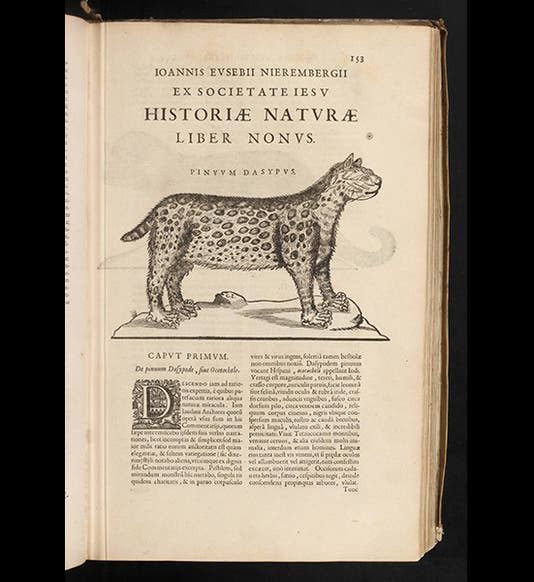Scientist of the Day - Juan Eusebio Nieremberg
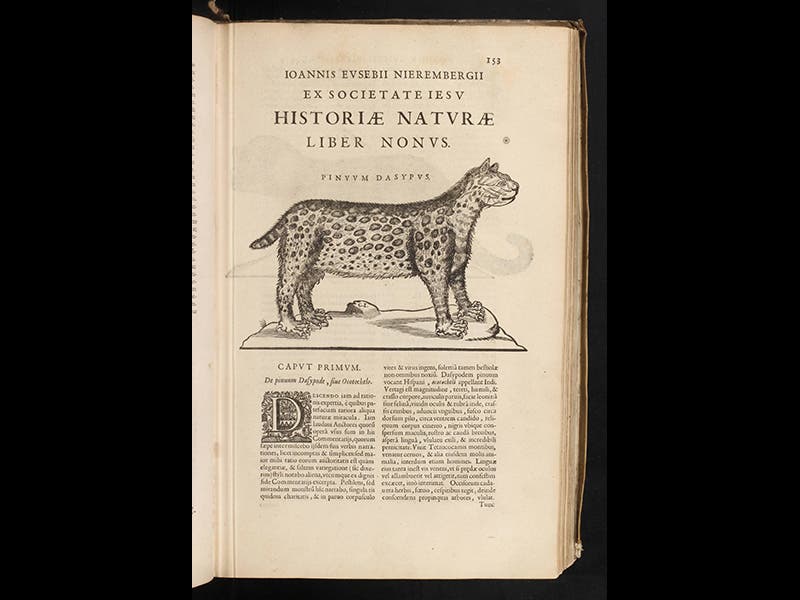
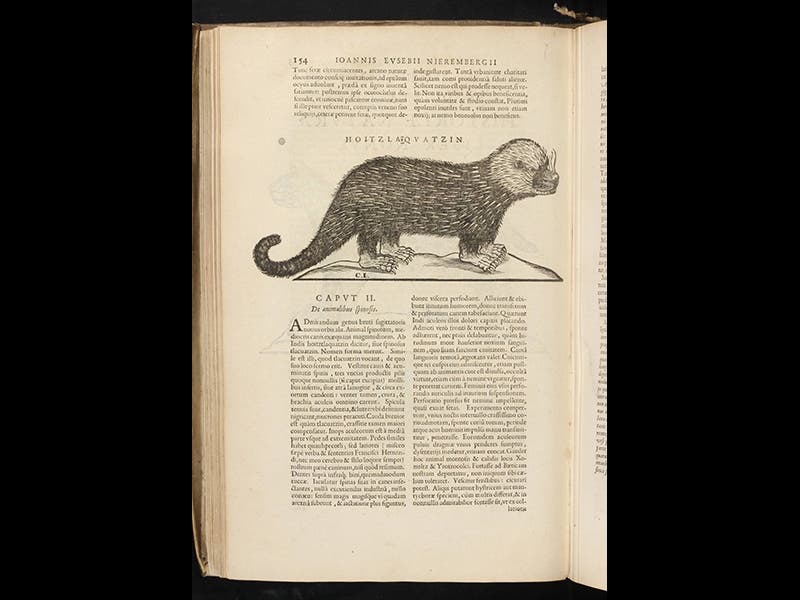
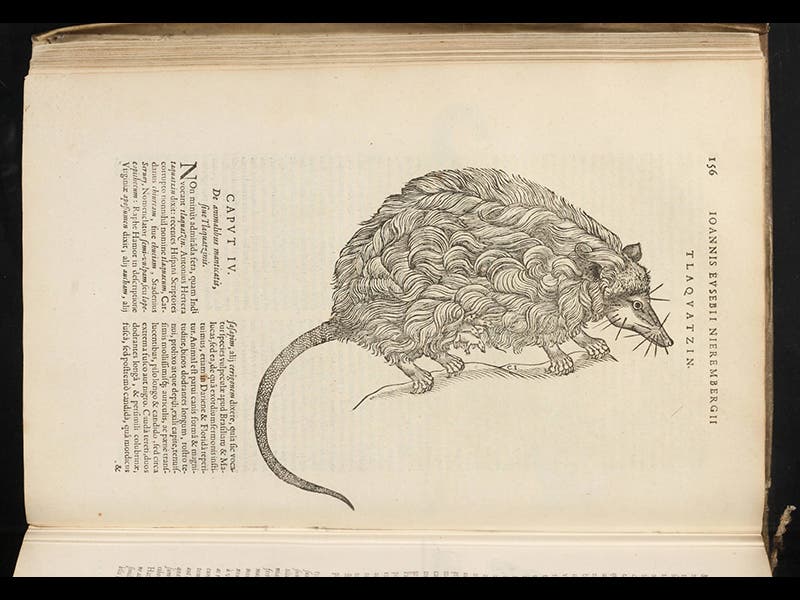
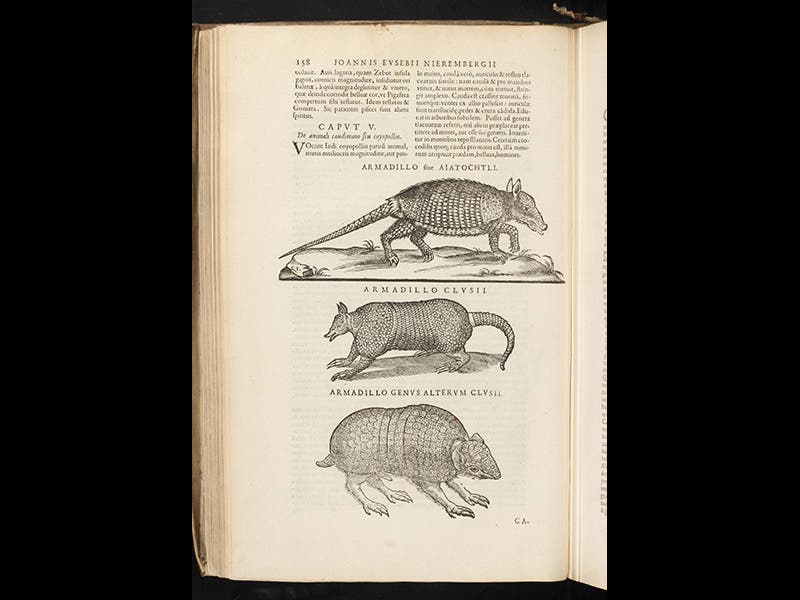
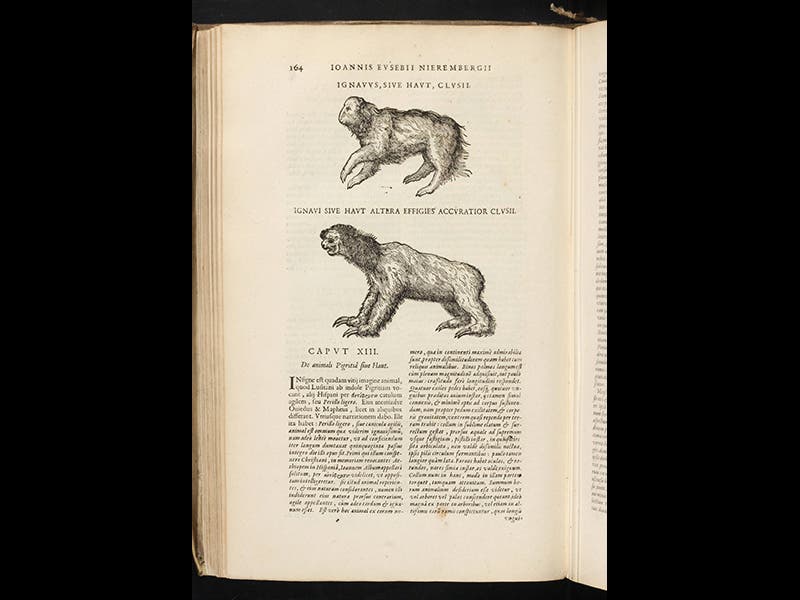

Juan Eusebio Nieremberg, a Spanish Jesuit, died on Apr. 7, 1658, in Madrid. Nieremberg compiled one of the first natural history encyclopedias devoted to animals of the new world. Titled Historia naturae, and published in 1635, it was largely compiled from an unpublished manuscript by a Renaissance explorer, Francisco Hernandez, who had been to the New World. Nieremberg himself had not been out of Spain. But his History of Nature is a beautiful book, decorated with many large woodcuts, and it is of interest because Nieremberg invents what we might call "comparative natural history," where he illustrates, say, an armadillo, with an image from Ulisse Aldrovandi, and then shows other depictions of an armadillo by Carolus Clusius, and by Hernandez. Thus his book is a good place to study the evolution of animal imagery from the Renaissance through the early 17th century. We exhibited this book once, in our 1992 exhibition, Uniquely American: The Discovery of America's Plants and Animals, which unfortunately never made it online or into print.
The images above, all taken from Nieremberg’s Historia naturae, show, in order: a jaguar, a South American porcupine, a North American opossum (with young), three armadillos, two versions of a sloth, and a manatee.
Dr. William B. Ashworth, Jr., Consultant for the History of Science, Linda Hall Library and Associate Professor, Department of History, University of Missouri-Kansas City

